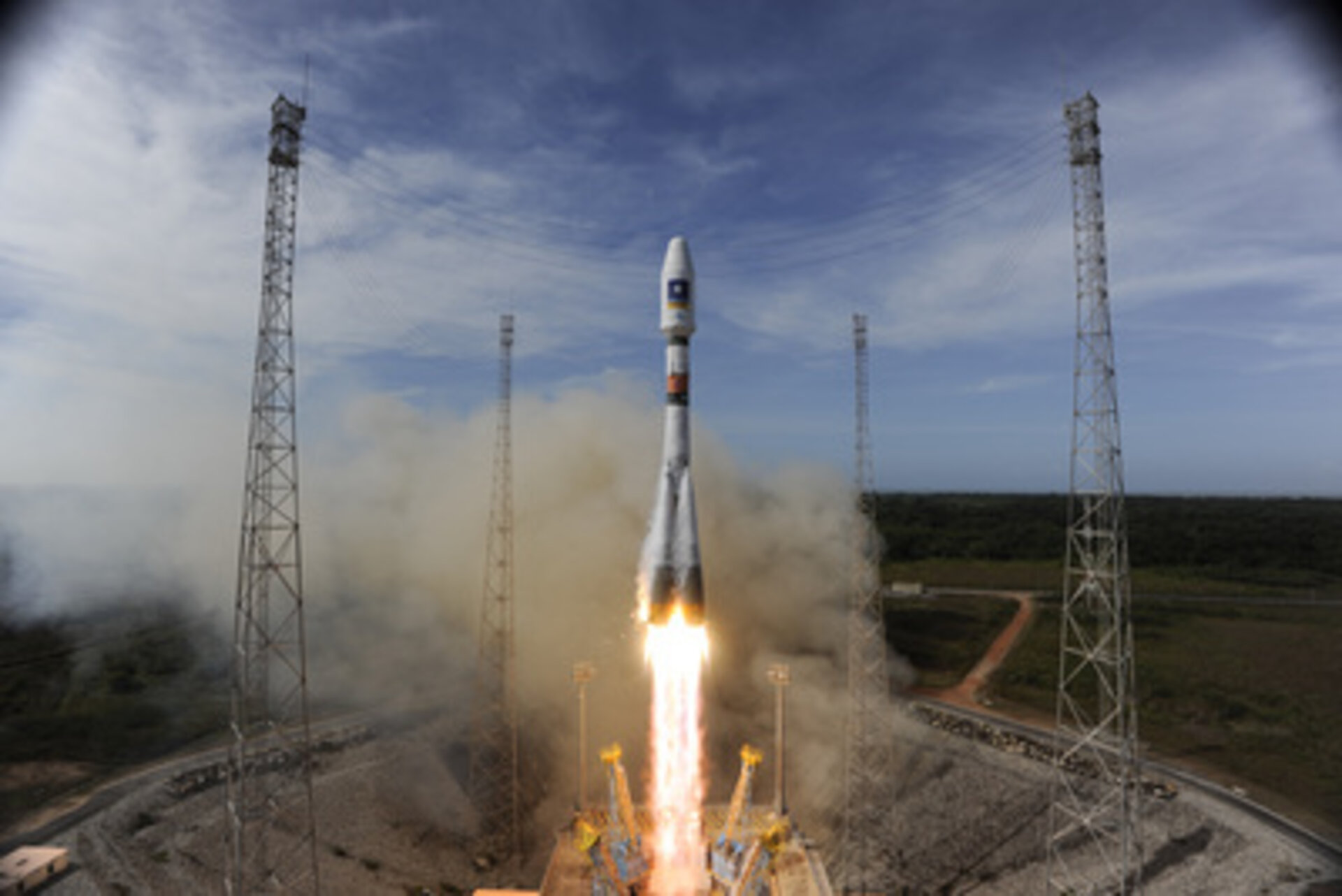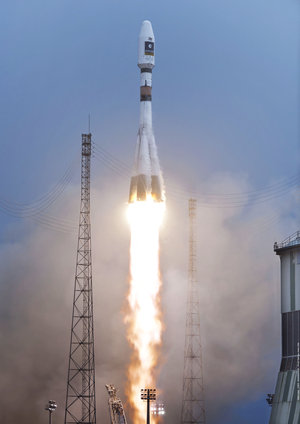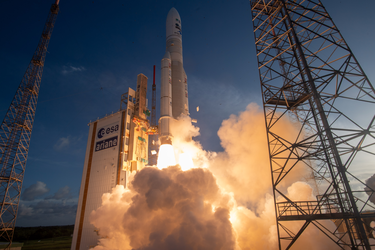Galileo's launchers
The Galileo constellation is being progressively deployed in batches, some launched in pairs (using the Soyuz launcher) and some in fours (using the Ariane V launcher).
About Soyuz
The Soyuz launcher is the workhorse of the Russian space programme, in continuous production since the 1960s, and a descendant in design terms of the R-7 rocket that launched Sputnik 1 in 1957, inaugurating the Space Age.
Soyuz has performed more than 1,700 manned and unmanned missions. It is designed to extremely high reliability levels for its use in manned missions – today supporting operations of the International Space Station.
As a medium-class launcher, bringing Soyuz to French Guiana complements Ariane and Vega to enhance the flexibility and competitiveness of Europe’s launcher family.
For French Guiana launches, this three-stage rocket (plus Fregat upper stage) is assembled horizontally in the traditional Russian approach, then moved to the vertical so that its payload can be mated from above in the standard European way. A mobile launch gantry aids this process, while also protecting the satellites and the launcher from the humid tropical environment.
For Galileo, a specially-designed dispenser holds the two satellites in place side-by-side during launch and then releases them sideways into their final orbits.
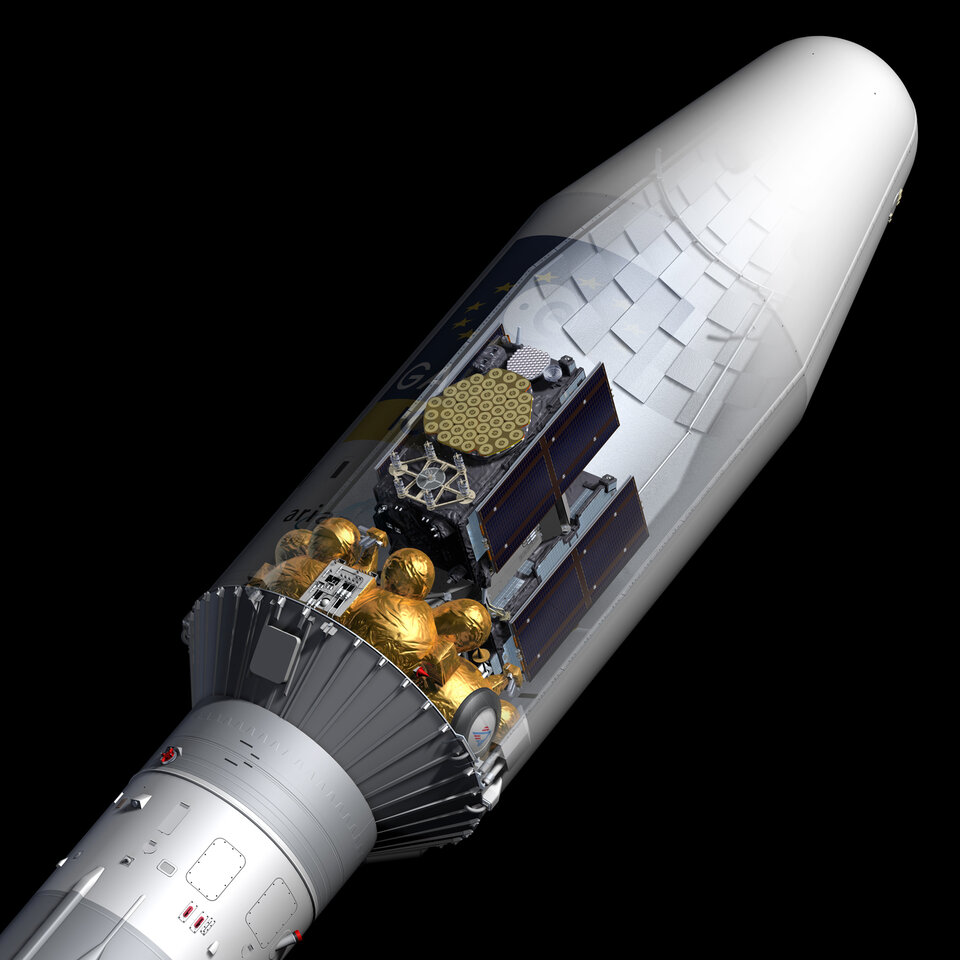
The Soyuz-ST configuration is the standard version launched from French Guiana: the more powerful Soyuz ST-B variant, including a Fregat-MT upper stage is the one used to deliver the Galileo satellites into their final circular 23 222 km orbit.
The reignitable Fregat was previously used in its baseline version to deliver ESA’s GIOVE-A and -B experimental satellites. Fregat-MT carries an additional 900 kg of propellant.
The Soyuz-ST launcher has already carried the first four Galileo satellites into orbit, in 2011 and 2012 respectively.
About Ariane 5

The latest member of the 30-year-old Ariane family, the Ariane 5 launcher is the cornerstone of Europe’s independent access to space.
Its reliability, affordability and flexibility allow it to launch a wide variety of missions to space, from scientific and Earth observation missions to commercial comsats, ATV supply spacecraft to the ISS and – in future – Galileo satellites.
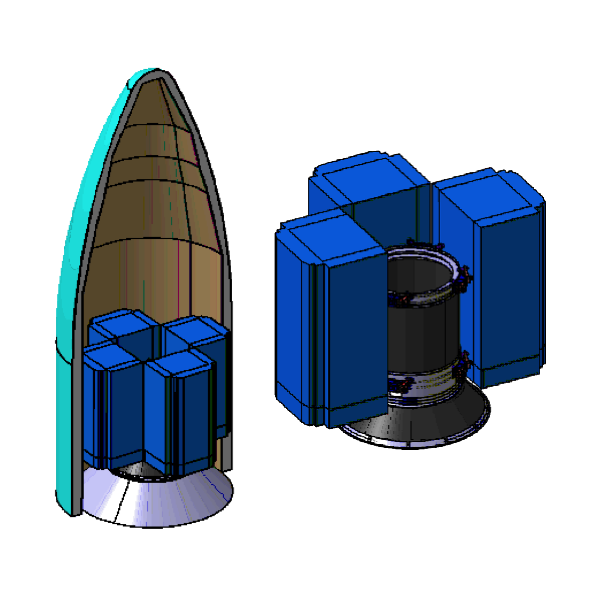
For future Galileo launches, the standard Ariane 5 launcher is in the process of being modified to the specific needs of the Galileo satellites.
The adaptation will enable four satellites to be carried per launch using a specially-tailored dispenser, accordingly speeding up the deployment of the constellation.


